| Address: | Borivali East, Mumbai, Maharashtra 400066 |
| Timings: | 8:00 AM to 05:30 PM (Tuesday to Friday) 8:00 AM to 11:00 AM (Saturday) |
| Phone: | 022 2886 0362 / 022-28860389 |
| Website: | https://sgnp.maharashtra.gov.in |
| Google Map: | https://goo.gl/maps/a5deMk7SSNw2ztHv9 |
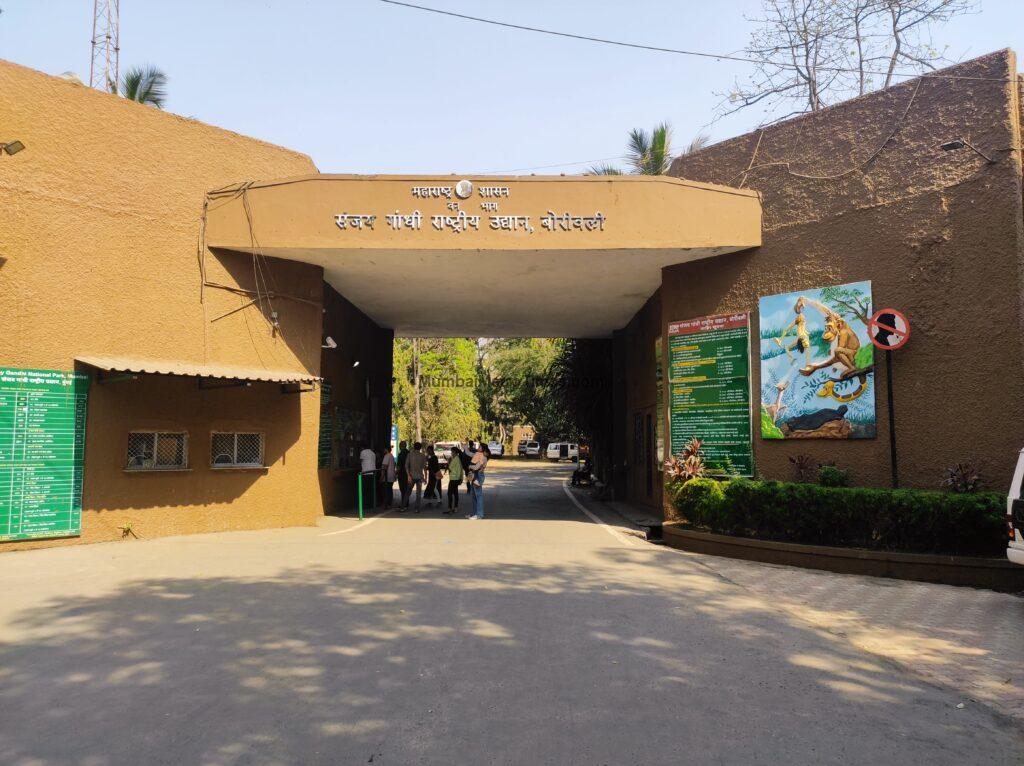
Sanjay Gandhi National Park in Mumbai is nothing more than a stunning natural wonderland covering a sizable size of 87 km. This park was opened in the year 1996 and welcomes more than two million visitors each year. The park was formerly known as Borivali National Park before Sanjay Gandhi, the ex-prime minister of India, passed away tragically.
One of the most popular national parks in Asia is, without a doubt, the National Park Sanjay Gandhi, which is bursting with amazing flora and fauna. This national park is essentially a gold mine for suburbs.

This location has a long, rich history that dates to the fourth century BCE. The Kanheri Caves, which were dug into the rock over 2,000 years ago, continue to be this area’s top attraction despite the numerous amazing sites that visitors can experience.
History of Sanjay Gandhi National Park
Sanjay Gandhi National Park’s origins may be traced to the fourth century BCE when the ancient civilisations of Kalyan and Sopara had a 45-kilometre trade route between them and their respective kingdoms, which traded with Greece and Mesopotamia.
The Kanheri Caves, a Buddhist pilgrimage and study centre, were on the commerce route connecting Sopara and Kalyan. Between the ninth and first centuries BCE, Buddhist monks carved the caverns out of a single piece of basalt rock.
Borivali National Park, which was only 20.26 square kilometres in size, replaced the older name of Krishnagiri National Park during the pre-independence era (1942). Following the Bombay National Park Act, this was done in 1942.
However, the park’s area was twice enlarged in the future. Twice, first in 1976 and once more in 1981. The area that became a part of the National Park in 1981 was 82.25 square kilometres.
In 1996, the park was renamed Sanjay Gandhi National Park in honour of the senior son of former Indian Prime Minister Ms. Indira Gandhi, and its size was simultaneously increased to 103 square kilometres.
The Architecture of Kanheri Caves
The Kanheri Caves feature viharas, stupas, prayer halls, and other structures of old-style Buddhist architecture. These caves’ carving out of a single bedrock is their most distinctive feature.

The caves’ construction is relatively straightforward, but they are expertly planned with functional elements like stone platforms for sleeping, channels to collect and store rainwater, lofty pillars, walkways, and other things.
The several caverns here each have their unique features, such as Cave 1’s incomplete chaitya griha and Cave 2’s three stupas and carved Buddha statues. A stupa, lofty pillars, and a sizable statue of Lord Buddha may be found near the entrance to Cave 3.
The caverns also include several Devanagari and Brahmi inscriptions, the majority of which are still unrevealed.
Where is Sanjay Gandhi, National Park
It is located in Borivali, northern suburbs of Mumbai. It is also known as Borivali National Park.
Below is the complete address of the National Park and Map Location:
Western Express Highway, Rajendra Nagar Society, Kulupwadi, Borivali East
Timings and Entry Fees of Sanjay Gandhi National Park Mumbai
Timings:
On Mondays, Sanjay Gandhi National Park is closed.
For morning walkers with monthly or annual passes, it is open from 5:30 AM to 7:30 AM on the other days.
It is open for daytime guests from 8:00 AM to 05:30 PM during Tuesday to Friday. During Saturday, it is open from 8:00 AM to 11:00 AM
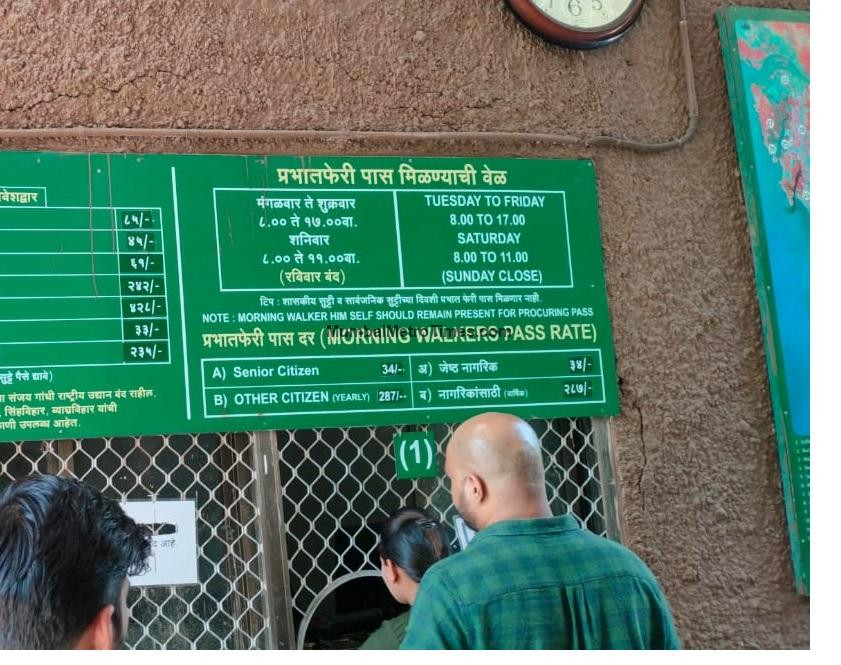
Entry Fees or Tickets:
Sanjay Gandhi National Park admission costs Rs. 85 for adults and Rs. 45 for kids. Between Sanjay Gandhi National Park and Kanheri Caves, a shuttle service is available for Rs. 10 per person.
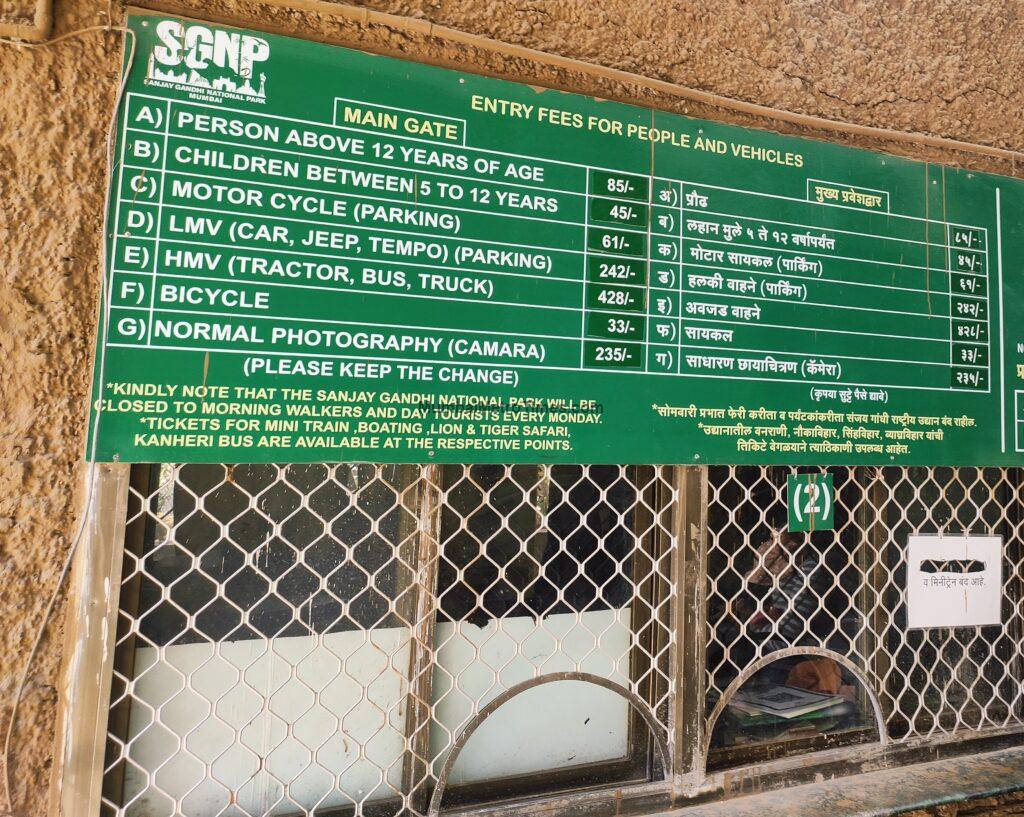
Interesting Facts about Sanjay Gandhi National Park
● The first tourist destination in this tourism area, which lies in the middle of the national park, is the Kanheri Caves. This cave served as a significant Buddhist educational hub between the ninth and first centuries BCE.
● In the Sanjay Gandhi National Park, you may find a lot of endangered plant and animal species.
● In Sanjay Gandhi Park, there are more than 1,300 different types of plants.
● The Sanjay Gandhi National Park’s main draw is an uncommon plant called Karvi, a lavender-coloured plant that blooms just once every eight years.
How to Reach Sanjay Gandhi, National Park
Sanjay Gandhi National Park’s closest train station is Mumbai-Borivali (Western line)
At Borivali Train Station, you can stroll to the national park (East). If someone doesn’t want to walk, they can alternatively use a cab or an auto-rickshaw to get to the park.
At the park’s entrance, all intercity buses heading in the direction of Borivali East stop. To go to the national park, one can also hire a taxi from one of Mumbai’s leading car rental businesses.
Things to do at Sanjay Gandhi National Park

- Butterfly Garden
In total, 170 different species of butterflies can be found in Sanjay Gandhi National Park’s butterfly garden. At the national park, the Nature Information Center (NIC) organises escorted butterfly trips.
From September through January, when they are at their most brilliant, is when one can see the most butterflies. A compact guide on butterfly identification is available from NIC.
- Cycling
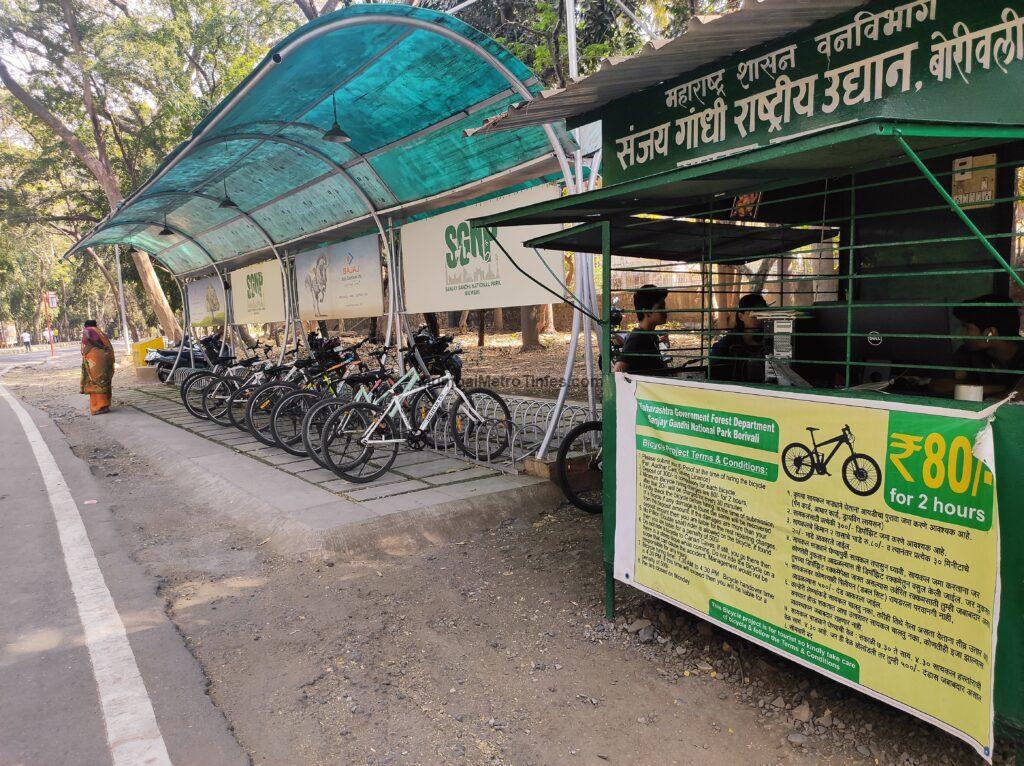
Cycling lovers can finally realise their dream of Sanjay Gandhi national park cycling through a largely vacant area thanks to the park’s expansive size, which is otherwise impossible due to Mumbai’s traffic jams.
Bicycles may be purchased or even rented inside the park for just INR 80 for two hours. A 300 INR deposit is required, along with identification documents. Since there are only a few bicycles available in the park, it is advised to arrive early or prepare to wait until one becomes available. Weekends are typically busy days.

- Boating
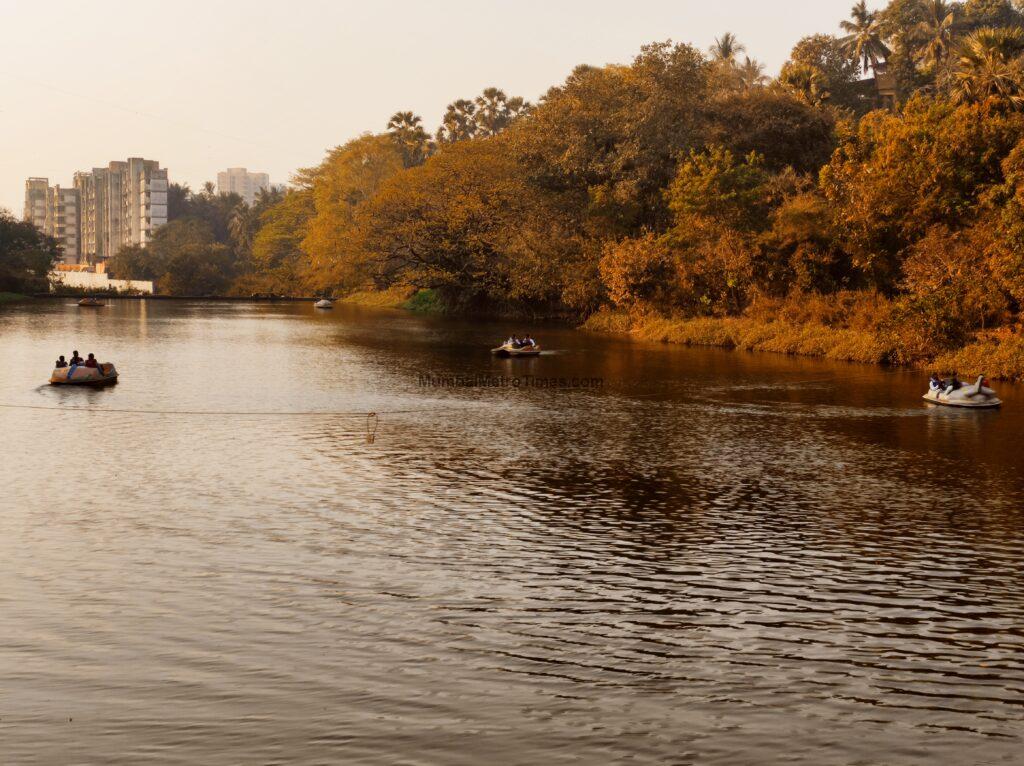
The hours for boating are from 9:00 AM to 5:30 PM, with a break for lunch from 12:30 PM to 1:30 PM. Boating tickets can be purchased directly from counter or online and validated at the national park ticket counter.
Boats with two seats cost INR 85, while those with four seats cost INR 173. The length of each boat ride is 15 minutes.
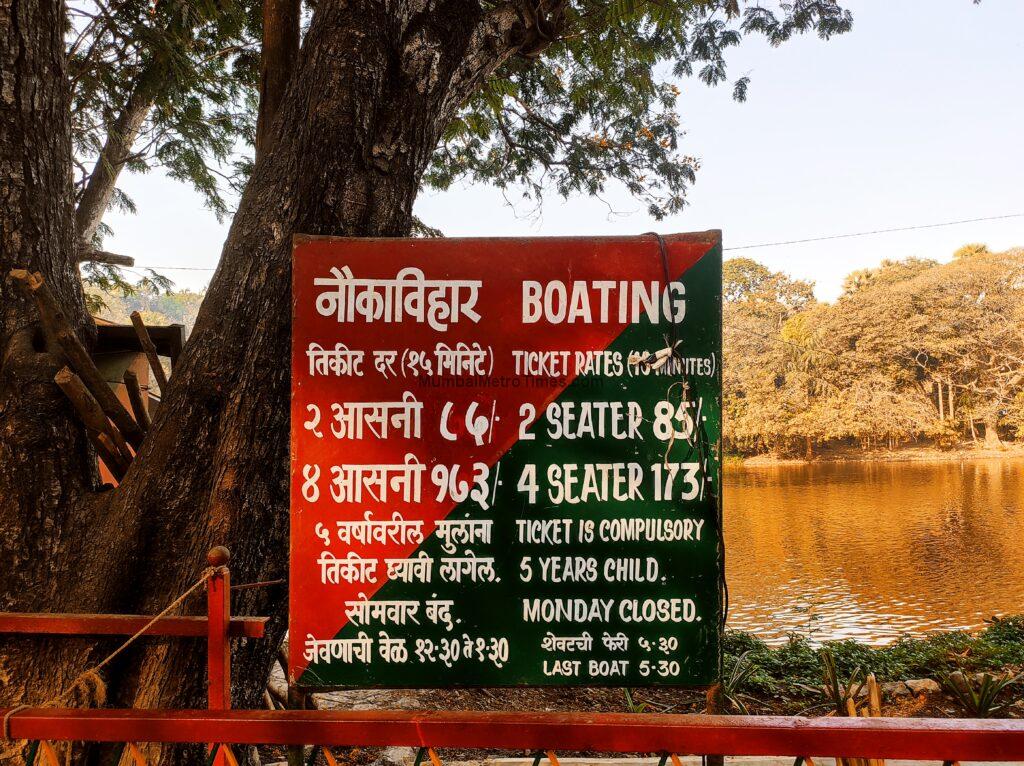
- Ride the Toy Train
Vanrani is the name of the toy train in Mumbai’s Sanjay Gandhi National Park. Tickets for rides on narrow-gauge trains can also be purchased online, but they must be confirmed at the ticket counter. The train runs from 9:00 AM to 5:30 PM, with a break for lunch from 12:30 PM to 1:30 PM.
Every ride takes 20 to 25 minutes. The cost is INR 50 for adults (12 years and older) and INR 19 for youngsters (5–12 years old) for each voyage. The only prerequisite for the train ride to start is that at least 20 passengers must be available.
- Camping
The NIC, SGNP, and the centre for nature information have organised overnight camping. They provide a variety of lodging options, including tents, pine huts, guest houses, and dorms.
Places to visit near Sanjay Gandhi National Park
- Kanheri Caves
The tallest mountain in Mumbai, known as the Kanheri caves, is located deep inside the Sanjay Gandhi National Park and is made up of old Buddhist caves. The Archaeological Survey of India looks after it. Particularly on weekends, both domestic and foreign tourists frequently visit the caves.
- Vihar Lake
The largest lake in Mumbai is called Vihar Lake. It is situated inside the Sanjay Gandhi National Park close to the Mithi River’s Vihar settlement. To help the residents of southern Bombay with their drinking water problems, the British administration constructed the lake between 1856 and 1860. The Powai-Kanheri hill ranges in the catchment area provide it with water.
- Tulsi Lake
A freshwater lake in northern Mumbai is called Tulsi Lake. It is reportedly Mumbai’s second-largest lake and provides some of the city’s potable water. The other two lakes on Salsette Island are Powai Lake and Vihar Lake, and this one is one of them.
The Sanjay Gandhi National Park’s (SGNP) Tulsi Lake is frequently the first to overflow.
- Chota Kashmir
Amid the concrete and steel high rises and remote from all the hustle and bustle of Bombay, lies the small green strip of Aarey Colony that contains a parkland called ‘Chhota Kashmir’. The lake and Chhota Kashmir Garden are on opposing sides of the street. The lake has been the setting for countless Bollywood song filming and provides boating opportunities.
Conclusion
There is a lot more to the Sanjay Gandhi National Park than one might think. In addition to the element of adventure, one can also find calm in the dense forest cover. It is nothing short of a blessing to hear the wind blow and the birds chirp.
But given the state of the world today, it might be difficult to maintain a positive connection to nature. During a vacation to Mumbai, one should undoubtedly visit this park, which will let them reaffirm their connection to their heritage.
